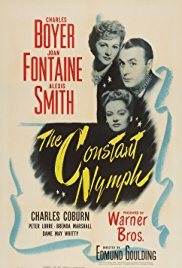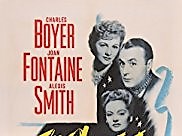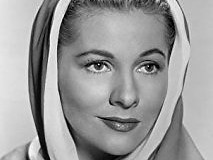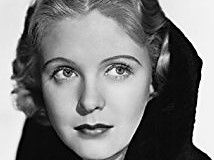The Constant Nymph **** (1943, Charles Boyer Joan Fontaine, Alexis Smith, Charles Coburn, Dame May Whitty, Peter Lorre, Eduardo Ciannelli, Brenda Marshall) – Classic Movie Review 6810
Director Edmund Goulding’s 1943 Hollywood version of Margaret Kennedy’s bestselling novel and play (with Basil Dean) is the third movie of the piece, originally filmed in GB in 1928 with Ivor Novello and Mabel Poulton, and again in 1933 with Brian Aherne and Victoria Hopper.
This time the Margaret Kennedy work is adapted as a stylish romantic vehicle for Joan Fontaine as Tessa Sanger, an ailing teenage girl who falls in love with family friend Lewis Dodd (Charles Boyer), a handsome, poor, egotistical and neurotic musician and composer. He weds her rich and worldly society lady cousin, Florence Creighton (Alexis Smith), and, when she becomes consumed with jealousy and points out that Fontaine is her rival, Boyer sees the error of his ways, but…
Fine star playing (Fontaine was Oscar nominated), and the terrific cast (Charles Coburn, Dame May Whitty, Peter Lorre, Eduardo Ciannelli, and Brenda Marshall are particularly engaging) help to distract attention from the bumps in Kathryn Scola’s screenplay and the studio painted backdrops built on Warner’s largest sound stage. Goulding directs this attractive film sensitively, and Erich Wolfgang Korngold’s score is a constant pleasure.
Also in the cast are Joyce Reynolds, Montague Love, André Charlot, Jean Muir, Jeanine Crispin, Doris Lloyd, Joan Blair, Richard Ryan, Marcel Dalio, Crauford Kent and Clemence Grove.
The Constant Nymph is directed by Edmund Goulding, runs 107 minutes, is released by Warner Bros, is written by Kathryn Scola, is shot in black and white by Tony Gaudio, is produced by Henry Blanke, is scored by Erich Wolfgang Korngold and Leo F Forbstein, and is designed by Carl Weyl.
The Library of Congress Film Archive restored The Constant Nymph and it premiered at the Turner Classic Movie Festival in spring 2011 and aired later on the TCM cable movie channel. It was unavailable for more than half a century, stuck in contractual copyright limbo, as it uses a combination of both the novel and play and separate contracts were negotiated in 1943 with both Kennedy and Dean.
Warner Bros re-dressed the elaborate Swiss mountain set, incorporating the Sanger family home, as the Yorkshire moors for Devotion (1946), a biopic of the Brontës, with Fontaine’s sister Olivia de Havilland.
It was the last of Fontaine’s three Oscar nominations, following Rebecca (1940) and Suspicion (1941), for which she won Best Actress.
It was the last film of Jean Muir (1911–1996), who plays Kate Sanger here. Her film career lasted just 10 years – from 1933 to 1943.
© Derek Winnert 2018 Classic Movie Review 6810
Check out more reviews on http://derekwinnert.com





